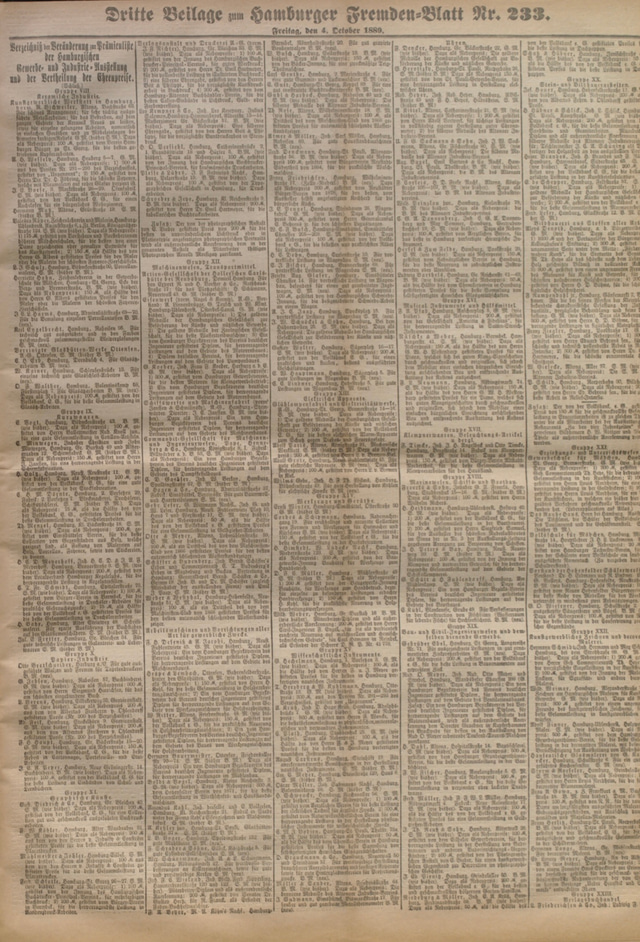
Little is known about the personal biography and full initials of the craftsman Brauckmann. His surname is mentioned as the founder of the company “D. Brauckmann & Co.”, which in the second half of the 19th century was engaged in the manufacture and sale of optical and precision instruments in Hamburg. The company held the status of an “Optisches Institut” (Optical Institute) and was located at Neuer Wall 50 and Steindamm 57 in Hamburg.
The firm offered a wide range of products: “a large stock of photographic cameras (including so‑called detective cameras), tripods, lenses, photographic paper, and all related accessories; a particular specialization was in theatre binoculars (opera glasses).” This indicates that Brauckmann began his career as an optician and dealer in precision instruments, gradually expanding his business into related fields such as photographic and meteorological equipment.
Brauckmann gained the greatest recognition for his originally designed movements for aneroid barometers, produced by his company in the late 19th century. These mechanisms were notable for their unconventional form and mechanical structure.
In the third supplement to the newspaper Hamburger Fremden‑Blatt No. 233 of October 4, 1889, it is reported that Brauckmann & Co. (Hamburg, Neuer Wall 50 and Steindamm 57) was commended for the distinguished manufacture of practical aneroid barometers and other instruments, as well as for the high quality of reverse glass paintings (Hinterglasmalereien) intended for projection purposes.
Brauckmann’s name most often appears in the literature together with that of the Hamburg designer Heinrich Emil Lessing.
Emil Lessing, the designer of unusual barometer mechanisms. These mechanisms stand out due to their construction; they are made in a circular form and use a self-elastic membrane as the measuring element.
Heinrich Emil Lessing is mentioned in the 1876 address book with a home address at Mühlenstraße 11a, Hamburg. Additionally, he is listed as a co-owner of the company Lessing & Carstensen, specializing in optics and mechanics, located at Steindamm 15.
On September 20, 1875, Heinrich Emil Lessing joined the trading company of Johannes Carstensen, which had been founded back in 1674. However, on November 25, 1875, Lessing left the company, which was then liquidated under Carstensen’s management. A few days later, on December 1, 1875, Heinrich Emil Lessing established his own company under the name Emil Lessing, which existed until 1906.
Lessing’s own enterprise, apparently, never developed any active public operations or regular production; instead, he seems to have engaged in instrument design only occasionally. His inventive work is evident in the creation of unusual aneroid barometers with original constructions. At least three surviving examples of his barometers are known, each notable for its unconventional mechanism.
Despite the innovative nature of his designs, Lessing did not receive (as far as current records show) any patents in the German Empire or abroad—at least, his name does not appear in the known patent registers of the period. Most likely, the limited scale of production and the niche character of his inventions did not warrant patenting.
The company Lessing & Carstensen was still registered at Steindamm 15 in 1877, which was likely also Carstensen’s residence.
It is likely that Emil Lessing’s company, registered in 1876, did not last long. He may have produced only a single type of barometer or sold them occasionally. The late liquidation of the company in 1906 may have been related to his death. It is also possible that he deliberately kept the company registered to return to work from time to time, such as in 1888, when he created a mechanism for Brauckmann.
The Lessing surname is well known in Germany and is associated with art and creativity, particularly due to prominent figures in creative professions, including writers, playwrights, and numerous painters.